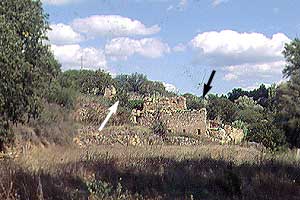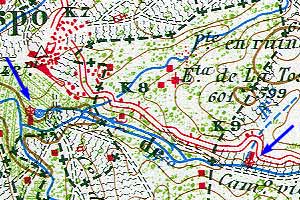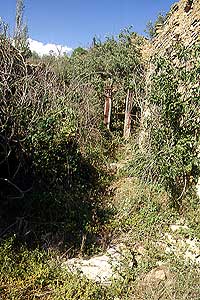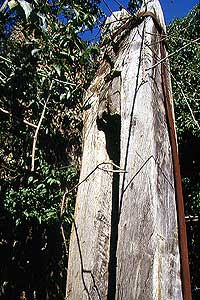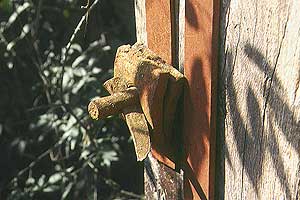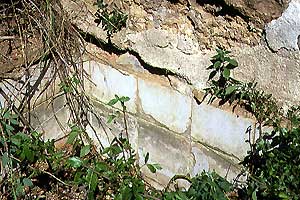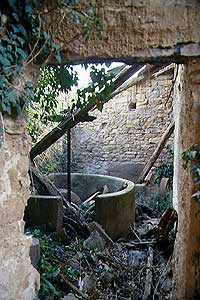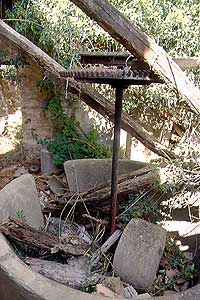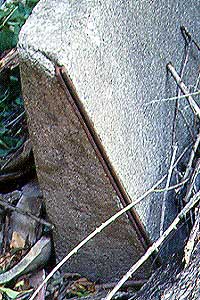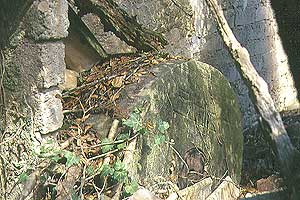Path: Introduction -
Visit the mills; catalogue - Aler

Mills in Alto Aragón — harinero, aceitero
Aler

This mill is situated between
and and is in fact built closer
to the former but still inside the latters territory. Torres del Obispo is perhaps
not that easy to find because it's not on the regular tourist track. From
take the main road to the south and after a while turn left for Benabarre.
You'll soon reach Torres del Obispo. Take left at the branch leading to the
village center. Keep to this road and you'll soon leave TdO at the east side.
This is the old road for Aler and Tremp. After less than 2 km there are
some sharp bends where the road crosses the Barranco de Gasíño.
A sand path will lead you down into the valley and to the molino.
The mill got water from the Bco de Gasíño.
The mill got water from the Bco de Gasíño.
Pictures: 20.viii.2006; Map: Inst. Geográfico y Catastral, 1952
